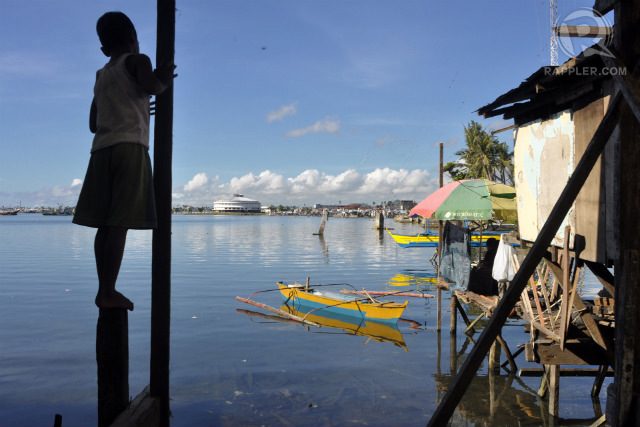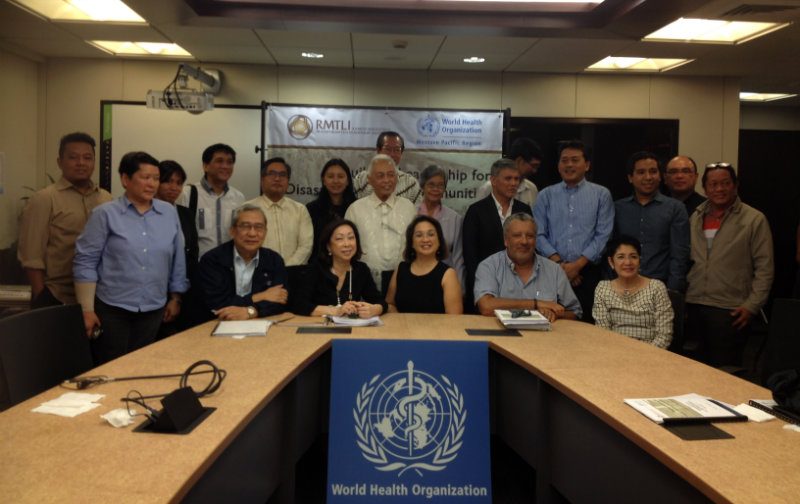SUMMARY
This is AI generated summarization, which may have errors. For context, always refer to the full article.

MANILA, Philippines – Situated along the so-called “Ring of Fire,” countries like the Philippines and Indonesia are geographically fated to experience natural disasters like volcanic eruptions and earthquakes.
In 2004, an earthquake and tsunami hit Aceh, Indonesia, leaving roughly 220,000 people dead or missing. Ten-storey high waves swallowed the shores of Aceh, wiping out everything in its path.
In 2008, Cyclone Nagris battered the Irrawaddy River Delta in Myanmar, causing storm surges that reached 40 kilometers inland. It claimed around 140,000 lives, mostly from shanties located barely above sea level. (READ: What you need to know about storm surges)
In November 2013, the Philippines bore the brunt of the strongest typhoon that ever made landfall. At least 6,300 died, 28,689 injured, and 4.1 million Filipinos displaced due to super typhoon Yolanda.
However unfortunate, these events leave lessons for disaster-prone countries.

Speaking at the conference on “Building leadership for disaster resilience” on Tuesday, November 4, Ja Nu of the Metta Development Foundation in Myanmar; Anton Soedjarwo, 1983 Ramon Magsaysay Awardee from Indonesia; former Camotes Mayor Alfredo Arquillano; and Mark Joaquin Ruiz of HapiNoy shared important lessons on disaster mitigation and recovery which countries can use in their disaster risk reduction programs.
1. Mangrove forests can protect coastlines from storm surge and tsunami
Before crashing into the villages, the full impact of the storm surges that hit the shores of Myanmar was slowed down due to their mangrove plantation. Many people also survived by climbing trees in the forest. (READ: A town saved by mangroves) In Myanmar, Jan Nu shared how the country’s experience with Cyclone Nagrasi taught communities the significance of mangrove forests in mitigating the effects of natural calamities.
2. Profiling communities can help in disaster preparedness and response
A comprehensive community profile would allow officials and disaster responders to properly map and plan their deployment before, during, and in the immediate aftermath of typhoons.
Soedjarwo emphasized the importance of profiling communities in preparing and responding to disasters. “We have to admit that [officials] have to be fully aware of the resources, evacuation centers – basically, everything – in their community,” he said.
Keeping a record of the community will also assist officials in cross checking the number of casualties and survivors in a community during disasters, Soedjarwo added.
3. A bottom-up approach to DRRM helps build resilient communities
After Yolanda passed, the town of San Francisco in the Camotes islands registered zero casualty. According to then Mayor Alfredo Arquillano, the purok system, a government unit smaller than a barangay, was instrumental in helping the town achieve zero casualty.
Through the purok system, local government officials are able to identify those who are most vulnerable to hazards in their community. The purok system also helps disaster responders and authorities determine which areas to prioritize in their preparedness, response and relief plans and programs.
4. Micro-entrepeneurship helps survivors recover from disasters
When Yolanda hit the country, HapiNoy, a social enterprise, came to Tacloban to help survivors recover through small business opportunities.
According to Mark Joaquin Ruiz of HapiNoy, small and innovative business opportunities like charging stations, sari-sari stores, and food stalls proved to be helpful to Yolanda survivors in their recovery from the economic impact of the disaster. Empowering survivors through such business opportunities helps scale down people’s dependence on aid and assistance. It also helps survivors get self-motivated and find a sense of purpose, Ja Nu added.
5. Strong and determined leadership is crucial to building resilient communities
Beyond making sure that mechanisms and systems are in place to mitigate the effects of disasters, participants in the conference acknowledged the importance of strong and determined leadership in times of disasters.
This was echoed by Cynthia Bautista of the Ramon Magsaysay Transformative Leadership Institute during the synthesis of the conference, saying that the “lack of leadership spells danger for the most vulnerable sectors during disasters.”
“Hazards are natural but disasters are socially-induced or man-made. The translation of natural hazards into disasters and the severity of their effects are (a) function of the type of disasters, its predictability, and level of communities’ vulnerability,” Bautista added.
Ultimately, the lessons learned from previous disasters will be rendered futile without a determined leader who will see through that programs and projects are implemented to achieve zero casualty in the future. – Rappler.com
Add a comment
How does this make you feel?
There are no comments yet. Add your comment to start the conversation.